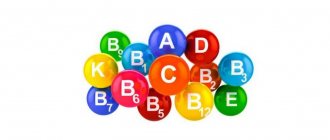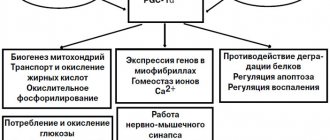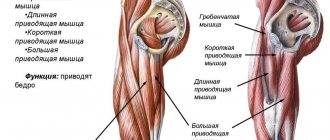Anyone who follows the rules of a healthy diet has probably heard about the benefits of fiber and bran. Some adherents of a healthy lifestyle believe that a lack of fiber in the body can explain many diseases and conditions - from flatulence to cancer. Also, “miracle fibers” are quite popular among those losing weight. Some manufacturers of ready-made breakfasts and dietary supplements assure that you just need to add fiber-rich foods to your diet, and the extra pounds will melt away before your eyes. But is this really so? We have collected in one article the most popular questions about fiber and bran, which pharmacies visitors can ask their primary care providers.
Is it true that fiber comes in only one type and is needed by everyone without exception?
Fiber is the general name for dietary fiber found in foods of plant origin [1]. These fibers contain complex carbohydrates with different chemical formulas: cellulose, polysaccharides, pectin and others. They are not digested in the stomach; only intestinal bacteria are involved in their processing. It is customary to distinguish two types of fiber: soluble and insoluble. They are both needed for the normal functioning of the body.
Soluble fiber, when combined with water, turns into a viscous gel-like substance, helping food move through the gastrointestinal tract. Insoluble fiber passes through the body almost unchanged and is “responsible” for the formation of feces. If we are talking about a balanced diet, then the total amount of fiber consumed should be at least ¾ of soluble fiber. Most plant foods contain both types of fiber.
Despite the undeniable benefits of fiber, there are nevertheless cases when foods rich in it can be harmful [2]. For example, wheat, rye and oat bran contain gluten, which damages the villi of the small intestine in patients with celiac disease. You should not rely on fiber during exacerbations of gastritis, ulcers, colitis and infectious enteritis.
Microtubules
Microtubules are membranous, supramolecular structures consisting of protein globules arranged in spiral or straight rows. Microtubules perform a predominantly mechanical (motor) function, ensuring the mobility and contractility of cell organelles. Located in the cytoplasm, they give the cell a certain shape and ensure the stability of the spatial arrangement of organelles. Microtubules facilitate the movement of organelles to places determined by the physiological needs of the cell. A significant number of these structures are located in the plasmalemma, near the cell membrane, where they participate in the formation and orientation of cellulose microfibrils of plant cell walls.
Microtubule structure
The most fiber is found in vegetables and fruits - is this true?
The leader in the content of insoluble fiber is bran [1] - essentially, it is the ground shell of the grain and the fiber in it - up to 45% of the weight. Next on the list of fiber-rich foods are seeds (including legumes) and nuts - most often their inner part contains soluble dietary fiber, while the outer part contains insoluble fiber. The rule usually works: the fattier the nut, the more fiber it contains. For example, macadamia and pistachios themselves are very high in calories, but at the same time they contain a lot of plant fiber (up to 10% of the total weight).
Vegetables and fruits contain mainly soluble fiber [3]. What’s interesting: those vegetables and fruits that are stored raw (potatoes, carrots, apples, etc.) gradually lose their supply of vitamins, but accumulate fiber. And in cucumbers, zucchini and eggplants, fiber is found more in the peel than in the pulp.
Vacuole
The vacuole is the most important component of plant cells. It is a kind of cavity (reservoir) in the mass of the cytoplasm, filled with an aqueous solution of mineral salts, amino acids, organic acids, pigments, carbohydrates and separated from the cytoplasm by a vacuolar membrane - the tonoplast.
Cytoplasm fills the entire internal cavity only in the youngest plant cells. As the cell grows, the spatial arrangement of the initially continuous mass of cytoplasm changes significantly: small vacuoles filled with cell sap appear, and the entire mass becomes spongy. With further cell growth, individual vacuoles merge, pushing the layers of cytoplasm to the periphery, as a result of which the formed cell usually contains one large vacuole, and the cytoplasm with all organelles is located near the membrane.
Water-soluble organic and mineral compounds of vacuoles determine the corresponding osmotic properties of living cells. This solution of a certain concentration is a kind of osmotic pump for controlled penetration into the cell and release of water, ions and metabolite molecules from it.
In combination with the cytoplasm layer and its membranes, characterized by semi-permeable properties, the vacuole forms an effective osmotic system. Osmotically determined are such indicators of living plant cells as osmotic potential, suction force and turgor pressure.
Structure of the vacuole
Is it possible to overdo it with fiber? Or the more the merrier?
The daily intake of dietary fiber for women under 50 years of age is 25 grams, for men - 38 grams, and after 50 years of age - 21 and 30 grams, respectively [4]. Children from 2 to 5 years old need 15 grams of fiber per day, from 5 to 11 years old - 20 grams, from 11 to 16 years old - 25 grams [1].
What happens if you eat too much fiber? Fiber helps move undigested food along, but reduces the level of absorption of nutrients by the intestinal walls. If a person begins to consume more than 50–60 grams of fiber per day, the body is unable to absorb enough of the important elements before the undigested food turns into feces. In addition, the phytic acid contained in bran can interfere with the absorption of zinc, magnesium, calcium and iron. There is especially a lot of phytic acid in wheat bran.
Therefore, it is important to approach the use of special dietary supplements with fiber wisely, calculating your daily intake yourself or together with a nutritionist.
Endoplasmic reticulum
The endoplasmic reticulum is a network of channels, tubes, vesicles, and cisterns located inside the cytoplasm. Discovered in 1945 by the English scientist K. Porter, it is a system of membranes with an ultramicroscopic structure.
Structure of the endoplasmic reticulum
The entire network is united into a single whole with the outer cell membrane of the nuclear envelope. There are smooth and rough ER, which carries ribosomes. On the membranes of the smooth ER there are enzyme systems involved in fat and carbohydrate metabolism. This type of membrane predominates in seed cells rich in storage substances (proteins, carbohydrates, oils); ribosomes are attached to the granular ER membrane, and during the synthesis of a protein molecule, the polypeptide chain with ribosomes is immersed in the ER channel. The functions of the endoplasmic reticulum are very diverse: transport of substances both within the cell and between neighboring cells; division of a cell into separate sections in which various physiological processes and chemical reactions simultaneously take place.
Bran helps you lose weight without dieting or exercise - is it a myth or true?
Bran is included in some dietary supplements for weight loss. However, you definitely shouldn’t rely on them as the only means of combating excess weight. Before you start losing weight, you need to visit an endocrinologist to identify the causes of weight gain and rule out concomitant diseases (diabetes, cardiovascular diseases, etc.).
Bran, in turn, can have a positive effect on intestinal trophism [2] and contribute to its regular cleansing. Rye bran is considered the “lightest” (contains just over 100 kcal per 100 grams), the most nutritious is barley bran (contains over 400 kcal per 100 grams).
Bran itself does not in any way affect the calorie content of the diet and does not eliminate bad eating habits. If a person, for example, has always had an addiction to sweets, then it is unlikely that it will disappear if you simply introduce bran into the diet. Rather, you will have to completely switch to a “healthier” menu instead of the usual treats and add adequate physical activity.
What benefits do dietary fiber bring to our body?
Despite the fact that the human body is not able to use dietary fiber as food, they are a “food base” for beneficial bacteria of the intestinal microflora and, as ballast substances, help improve the functioning of the liver, gallbladder, pancreas and intestines, as well as the removal of metabolic products and toxins.
Benefits of a high fiber diet:
- normalizes bowel movements and helps maintain bowel health;
- lowers cholesterol and sugar (glucose) levels in the blood and the risk of developing type 2 diabetes.
- promotes weight loss and maintaining a healthy weight; (increasing the feeling of satiety, inhibiting gastric emptying, stimulating bile removal processes).
- reduces the risk of death from cardiovascular disease and bowel cancer.
- Improves the functioning of the biliary system and bile outflow.
- Food rich in pectin and alginates prevents the accumulation of cesium and strontium radionuclides. Due to its ion-exchange properties, dietary fiber removes heavy metal ions (lead, strontium). In addition, they increase the synthesis of vitamins B1, B2, B6, PP, and folic acid by intestinal bacteria.
Does bran cause constipation?
The daily dose of bran for an adult is 30 grams. If you adhere to this norm, then, in the absence of chronic diseases, problems with bowel movements are extremely rare [2]. It is recommended to start taking bran with small portions: one teaspoon with a glass of water or shaken in a glass of yogurt. Liquid is needed so that the bran can swell properly. If you immediately eat several tablespoons of bran without following the drinking regime (25–30 milliliters of water per kilogram of a person’s weight), then constipation can actually occur. Usually it goes away on its own after a couple of days, but pain in the abdomen and directly during bowel movements is possible, since the stool will be too dense. It should also be taken into account that some types of bran contain fructan oligosaccharides, which produce gas during fermentation in the colon. This can cause belching and diarrhea, especially in people with gastrointestinal problems.
They say that bran is a good prevention of intestinal cancer. Is it so?
A review of scientific studies assessing the association between various sources of fiber (including grains, vegetables, fruits and legumes) and the risk of lower bowel cancer suggests that high dietary fiber intake may be beneficial in preventing this type of cancer. In particular, researchers see a decrease in the risk of cancer of the distal colon [6], since dietary fiber adsorbs carcinogens, reduces the transit time of feces through the intestines, normalizes the acidity of the intestinal environment and changes the metabolism of fatty acids. Findings from scientific articles also mention that protective associations are most noticeable with dietary fiber from cereals, whole grains and fruits.
Scientists also indicate that consumption of wheat bran increases the level of short-chain fatty acids (SCFAs) in the intestines, which are the main source of nutrition for colon cells. Presumably, SCFAs help prevent tumor growth and promote the death of cancer cells in the colon.
Is it possible to defeat “bad” cholesterol with the help of fiber?
Soluble fiber—a beta-glucan found in oat products, including cereals, cereals, and bran—binds cholesterol in the bloodstream and removes it from the body [7].
Insoluble fiber does not directly affect cholesterol levels, but it does help fill the body quickly, which could theoretically keep you from eating other foods that increase low-density lipoproteins. However, before going on the warpath with “bad” cholesterol, it would be a good idea to consult your doctor. It is also worth considering that it is possible to get rid of already formed atherosclerotic plaques only mechanically - through surgery.











